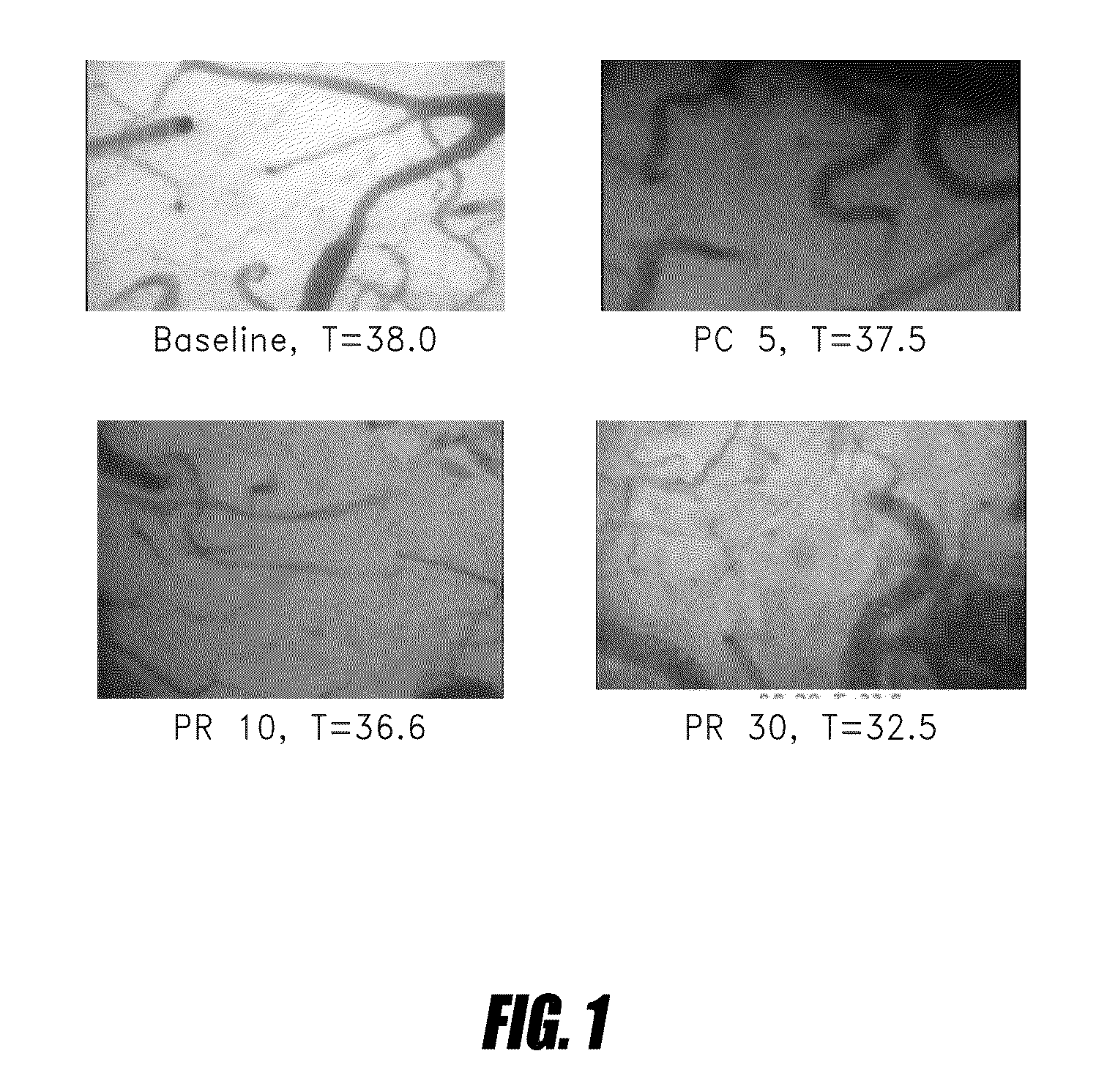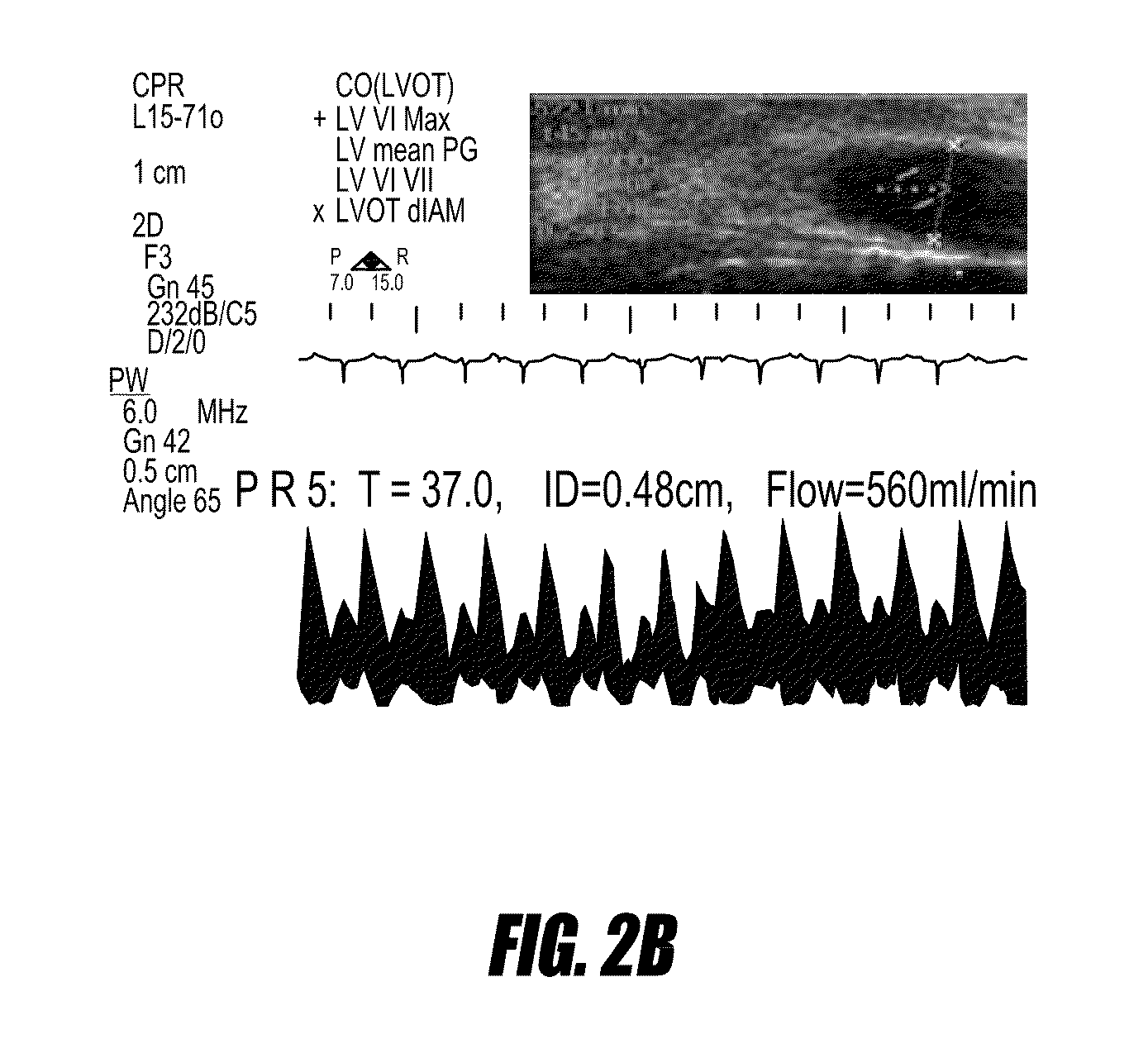Cooling of localized areas of the body for cerebral blood flow augmentation
a localized area and blood flow technology, applied in the field of cooling of localized areas of the body for cerebral blood flow augmentation, can solve the problems of increased risk of infection, decreased clotting threshold, electrolyte imbalance, etc., to enhance cerebral blood flow, increase cbf and dilation of arteries, and increase blood flow
- Summary
- Abstract
- Description
- Claims
- Application Information
AI Technical Summary
Benefits of technology
Problems solved by technology
Method used
Image
Examples
example 1
Effect of Cooling on Cerebral Blood Flow
[0040]Experiments were done with anesthetized live pigs. The brain was exposed so that blood vessels and blood flow could be viewed using an IR probe. Ventricular fibrillation (VF) was electrically induced to stop the heart. After 10 minutes, chest compression and defibrillation were initiated to resuscitate. The nose was cooled at a temperature of 2° C.; cooling was initiated 5 minutes prior to attempted defibrillation. Chest compression and defibrillation were continued for 15 minutes or until return of spontaneous circulation (ROSC). The nose was maintained at a temperature of 2° C. for 1 hour after initiation of CPR.
[0041]FIG. 1 shows cortical microvasculature assessed using optical coherence tomography (OCT) at baseline showing few vessels (upper left panel). The upper right panel shows blood vessels 5 minutes after initiation of chest compression (post compression, PC) and cooling of the nose. Following restoration of circulation, with a...
example 2
Effect of Cooling on Sympathetic Nerve Firing
[0047]The mechanism by which changes in nasopharyngeal temperature induce changes in cerebral blood flow may be secondary to sympathetic inhibition. We have documented reduction in the catecholamine surge which accompanies cardiac arrest. (FIG. 5).
[0048]Experiments were performed as described above for Example 1 except that in some cases the nose was cooled and in some cases the mouth was cooled. The control subjects did not receive a cooling treatment. As an indication of sympathetic nerve firing, levels of the catecholamine, norepinephrine, were measured (FIG. 5).
[0049]At VF15, before commencement of resuscitation, the controls have low levels of norepinephrine and the cooled subjects have virtually no norepinephrine. At 5 and 10 minutes post cardiac arrest, the levels of norepinephrine in the controls spikes up above 200 ng / ml, while the levels in the cooled subjects (both mouth cooling and nasopharyngeal cooling) remain much lower.
[00...
PUM
 Login to View More
Login to View More Abstract
Description
Claims
Application Information
 Login to View More
Login to View More - R&D
- Intellectual Property
- Life Sciences
- Materials
- Tech Scout
- Unparalleled Data Quality
- Higher Quality Content
- 60% Fewer Hallucinations
Browse by: Latest US Patents, China's latest patents, Technical Efficacy Thesaurus, Application Domain, Technology Topic, Popular Technical Reports.
© 2025 PatSnap. All rights reserved.Legal|Privacy policy|Modern Slavery Act Transparency Statement|Sitemap|About US| Contact US: help@patsnap.com



